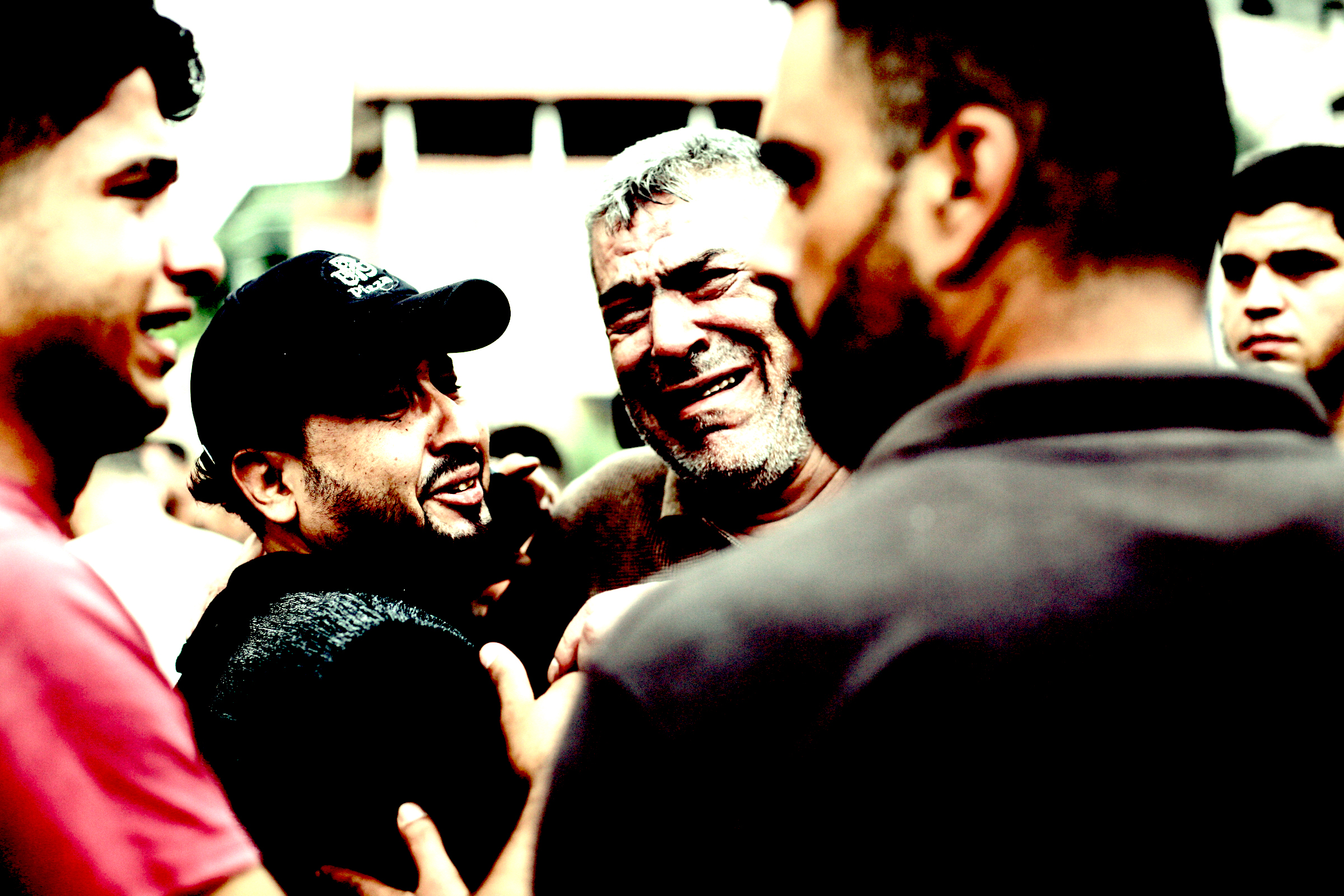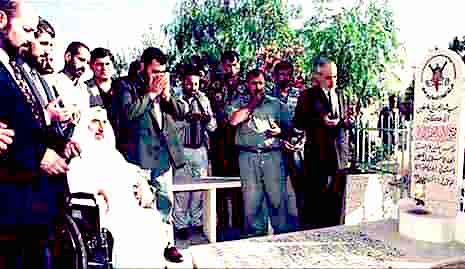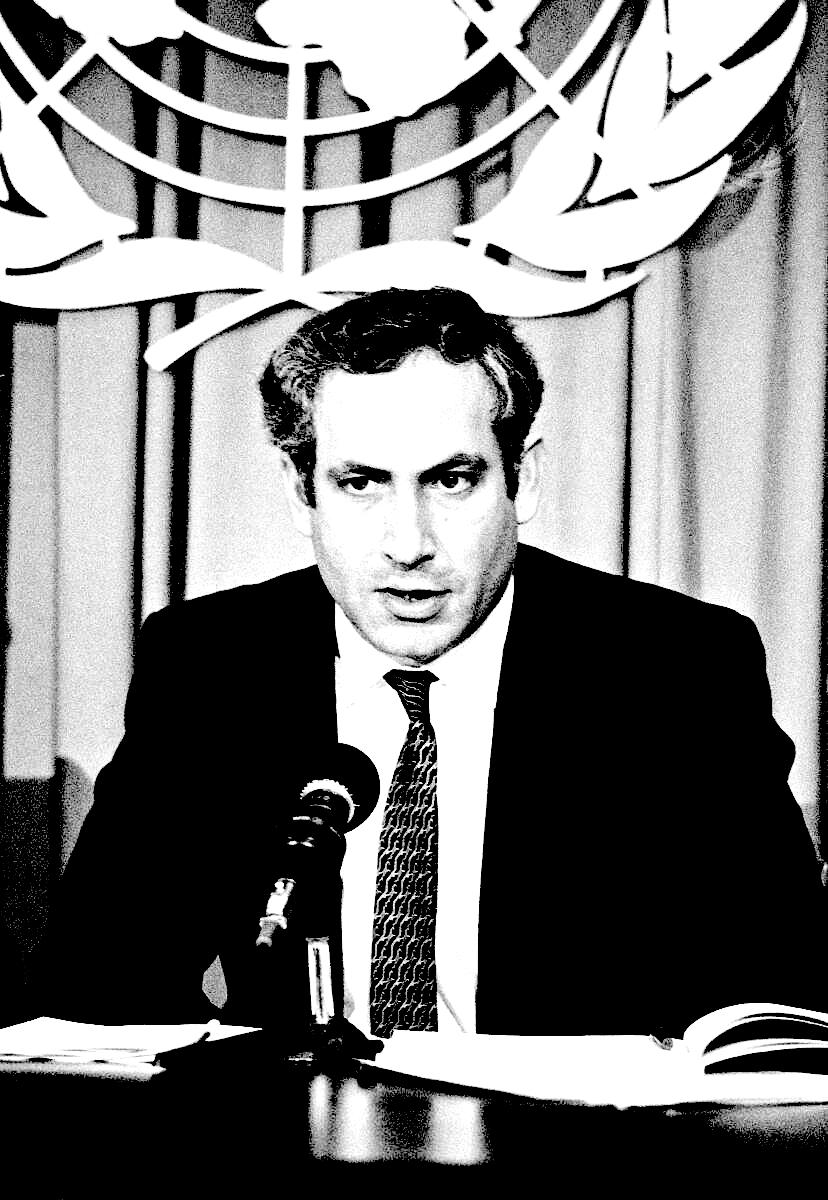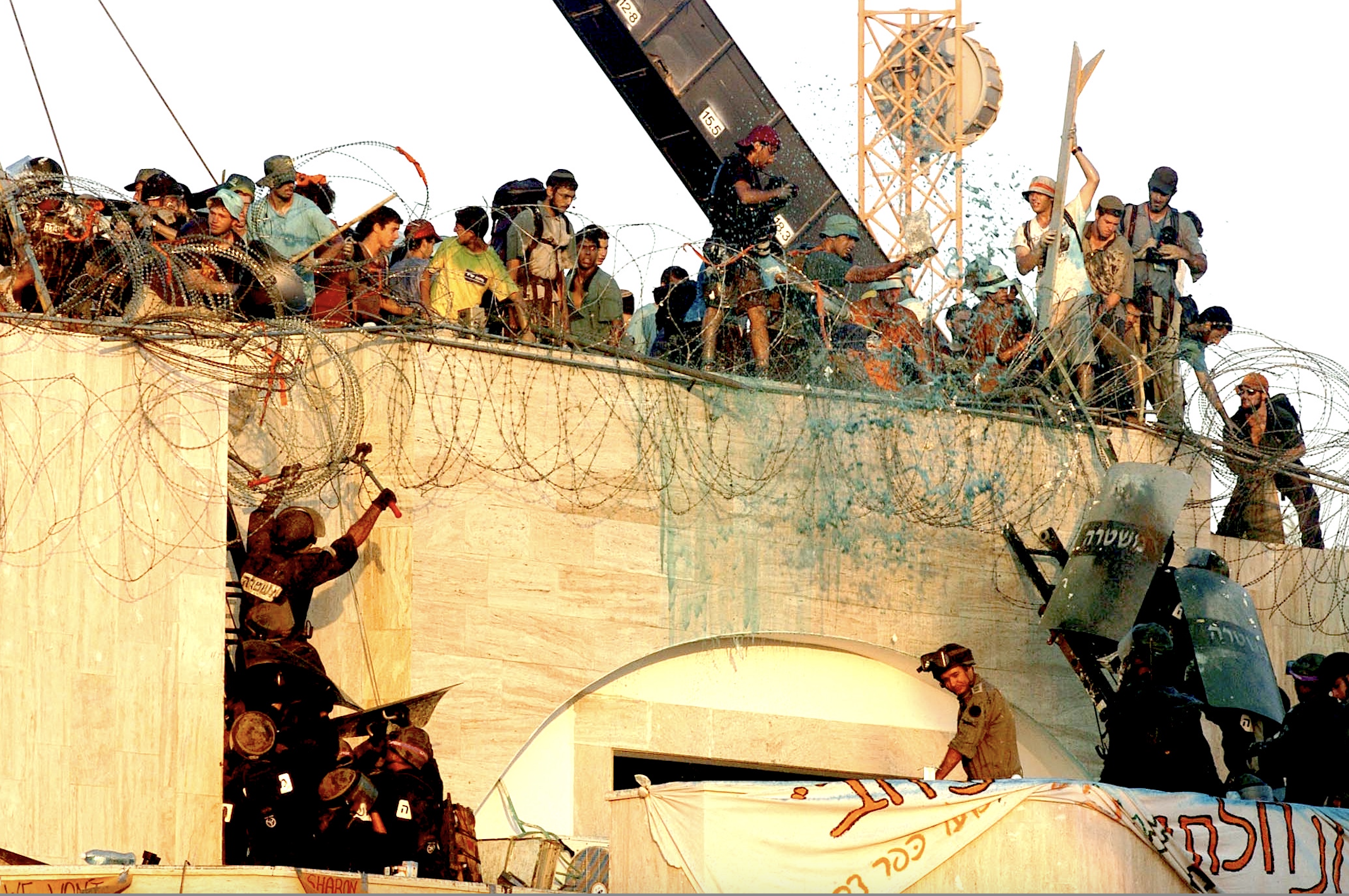Dan Steinbock lays out the background of the Netanyahu government’s apparent final solution, now underway, for the Palestinian territory. Part 4 in a 5-part series.

People outside Indonesian Hospital in Jubilee, just north of the Gaza Strip, after an Israeli airstrike on Gaza on Oct. 8. (Palestinian News & Information Agency, or Wafa, for APAimages, Wikimedia Commons, CC BY-SA 3.0)
This is the fourth article in a five-part series. Here is part one, two and three.
By Dan Steinbock
The World Financial Review
 With a population of over 2 million people on some 365 square kilometres, the Gaza Strip is one of the world’s most densely populated areas and “largest open-air prison.”
With a population of over 2 million people on some 365 square kilometres, the Gaza Strip is one of the world’s most densely populated areas and “largest open-air prison.”
After the 1948 Arab-Israeli War, it became an Egyptian-administered territory. Following the 1967 Six-Day War, it came under Israeli occupation. The precursor of Hamas, Al Mujamma al Islami (“The Islamic Centre”), was established in the Israeli-occupied Gaza in the 1970s under the auspices of the Palestinian Muslim Brotherhood. (For more, see the 2007 book Inside Hamas: The Untold Story of Militants, Martyrs and Spies by Zaki Chehab and Ilan Pappe’s 2017 book The Biggest Prison on Earth: A History of the Occupied Territories.)
One of their adherents was the wheelchair-bound Sheik Ahmed Yassin, the future leader of Hamas. Yassin concentrated the Mujamma’s activities on religious and social services. Ironically, Israeli authorities actively supported its rise, when their main antagonist was the late Yasser Arafat’s Palestinian Liberation Organisation, or PLO.
While PLO operatives in the occupied territories faced brutal repression, the Islamists affiliated with Egypt’s banned Muslim Brotherhood were allowed to operate in Gaza. Israelis hoped to use the Islamists against PLO. (See Andrew Higgins’ 2009 article “How Israel Helped to Spawn Hamas” in The Wall Street Journal.) Yassin was jailed in 1984 on a 12-year sentence, but released only a year later.

Hamas delegation in al-Yarmuk camp in Damascus, led by Ahmad Yassin, in wheelchair, at the grave of Fathi al-Shiqaqi, founder of the Islamic Jihad Movement in Palestine. Photo undated. (Store Norske Leksikon, Public domain )
At the time, when Netanyahu still served as the Israeli ambassador to the U.N., I interviewed him about his book Fighting Terrorism (1986), which offered lessons on “how democracies can defeat domestic and international terrorists.”
Fast, smart and slick, he represented a new generation of Israeli politicians trained by U.S. PR experts and his former employer, global consultancy BCG.

Nov. 16, 1986: Netanyahu holding a press conference at U.N. headquarters in New York while he was serving as Israel’s ambassador. (UN Photo, Saw Lwin)
Launched in 1988 amid the first intifada (uprising), Hamas has always refused to accept the existence of the Israeli state. When the peace process began between Israel’s Prime Minister Yitzhak Rabin and the PLO’s Arafat, Yassin was again in prison. Hamas launched a campaign of attacks against civilians, which contributed to the rise of Netanyahu and the Israeli far right in 1996.
Intriguingly, Netanyahu, as prime minister, ordered Yassin to be released from prison (“on humanitarian grounds”), despite his life sentence. Netanyahu seems to have relied on the Islamists to sabotage the Oslo Peace Accords. After having expelled Yassin to Jordan, Netanyahu allowed him to return to Gaza as a hero in late 1997.
[Related: Gaza, Hamas & Netanyahu’s Likud]
Until his killing in 2004, Yassin initiated a wave of suicide attacks against Israelis. As Netanyahu later told his Likud Party’s Knesset members in March 2019,
“anyone who wants to thwart the establishment of a Palestinian state has to support bolstering Hamas and transferring money to Hamas. This is part of our strategy – to isolate the Palestinians in Gaza from the Palestinians in the West Bank.”
(For more, see the article “Another Concept Implodes: Israel Can’t Be Managed by a Criminal Defendant,” by Gidi Weitz in Haaretz, on Oct. 9.)
In the 1990s, as part of the Oslo Accords, most of Gaza had been handed over to the Palestinian National Authority, alongside the Israeli settlements, which were evacuated in 2005, despite intense opposition by the Israeli far right.

Aug. 18, 2005: Residents riot during the forced evacuation of the Israeli community Kfar Darom during the Gaza Disengagement that summer. (Israel Defense Forces, Wikimedia Commons, CC BY-SA 2.0)
In 2007, after a legitimate Hamas election victory that rankled both the West and Fatah, the Islamist group took over and began administering Gaza. That led both Israel and Egypt to impose a land, sea and air blockade, which devastated the poor, ailing economy.
[Related: New Document Leak on Plan to Expel Gaza Population and Zionist Think Tank’s Blueprint for Gaza Ethnic Cleansing]
Before the global pandemic, Gazan Palestinians organised widespread protests demanding that Israel end the blockade and address the Palestinian-Israeli conflict. Already two years ago, Gaza’s economy was on the verge of collapse. Yet, those interests that had most to gain from such a humanitarian crisis allowed it to proceed to its inflection point.
The final solution of the Netanyahu government’s far right seems to be the devastation of Gaza and the twisted hope that this would cause a mass emigration of Gazans away from the Israeli border.
Dr. Dan Steinbock is the founder of Difference Group and has served at the India, China and America Institute (U.S.), Shanghai Institute for International Studies (China) and the EU Center (Singapore). For more, see here.
The views expressed are solely those of the author and may or may not reflect those of Consortium News.
Donate to CN’s
Fall Fund Drive



Stop calling Gaza a prison!!
It’s not a prison, it’s an open-air concentration camp
People go to prison for wrongdoing, Palestinians did nothing of the sort when their land was confiscated
Interestingly, one week before his assassination, Sheik Yassin proposed a Hudna (truce) for 10 years against killing Israeli civilians, to allow “time to sort matters out”.
hxxps://www.haaretz.com/2003-02-04/ty-article/yassins-hudna-and-the-armys-broken-promises/0000017f-f00b-d8a1-a5ff-f08b38d10000
Not only ‘open air’ prison but also ‘open air’ shooting gallery. The Zionists will reap as they sow…
I don’t know what the solution in the Middle East is, but I do know that there is NO solution forthcoming if the United States is part of the attempt to reach a settlement. The Biden Administration is toxic.
Those who were once in need of protection from genocide now commit jt .
By this are you refering to the Jews or the Palestinians as political co-partners in this Zionist project ? Actually Sheikh Yassin is little more than the Mahatma Gandhi of the Levant, if the latter was prisoned by the British to fool the Indian masses than the former was prisoned by the Israelis to befool the Palestinian and Arab masses if not also their self-serving elites ! Israel must be shown the door out and a God-respecting Palestine must be ushered in if true PEACE is to reign in in that holy region !
If you are horrified that your American tax dollars are the main reason Israel can conduct this ongoing massacre, contact your Congressperson and Senators and advise them they have lost your vote if they continue to support genocide. The only thing they really care about is re-election.
hxxps://www.house.gov/representatives
hxxps://www.senate.gov/